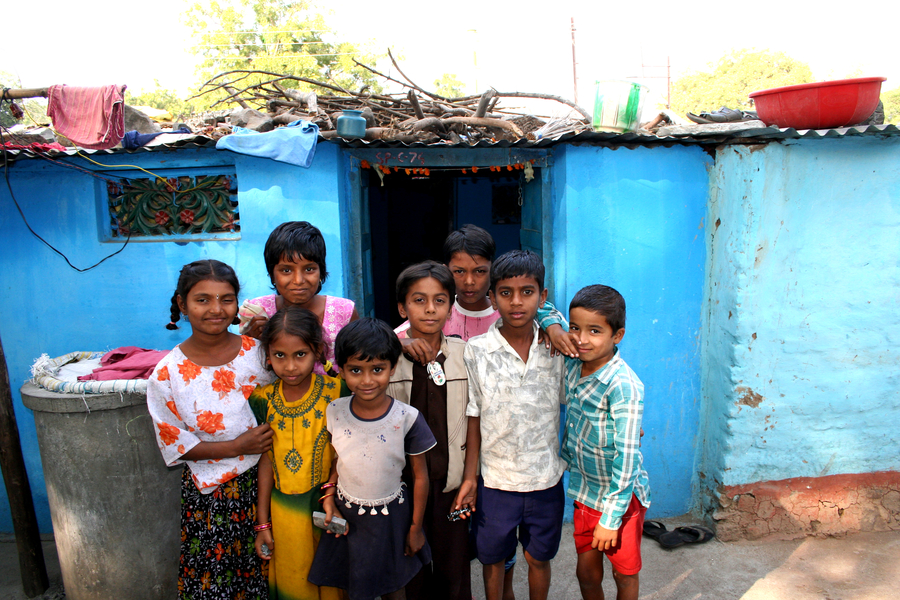To achieve sanitation, collective initiative from communities is imperative
|

Cristina Bicchieri, Professor in the Departments of Philosophy and Psychology at the University of Pennsylvania, was recently in New Delhi where, among other things, she conducted a session on understanding social norms for behavior change with WASH organizations. Keeping in view that social norms are an important topic for India’s work in sanitation, she emphasized that to defeat open defecation, we need to understand the norms and customs that influence open defecation and other sanitation behaviors and then use that information to promote healthier behaviors.
You have been travelling around India, at trainings and visiting sanitation projects. What are your insights?
India is a very interesting country. Although advanced, it remains a developing country and there is much poverty. There is incredible work going on in the sanitation space and there is a great opportunity to change things relatively quickly. There is commitment from communities: there are very positive people in these communities who care and are trendsetters, in that they are strongly committed to change. Women are really the moving force. A women’s group I met in a Delhi slum told me about a time when their lone voice was not heard, and how today, when they go in a group, the municipal officials are ready to talk to them. Also, young women today are thinking more about their health, the health of their families, and protecting themselves from violence.
If people understand this is a collective problem to be solved by collective behavior, we can then think of ways to scale up.
Do you think India will be able to overcome the association of open defecation as natural and pure, and household toilets as polluted?
Giving incentives to build toilets is a major obstacle as it does not induce behavior change. And India’s national emphasis has been on building toilets, not on using them. On the other hand, Community Led Total Sanitation (CLTS) programs have helped people to see the harms of open defecation, and to decide what sort of toilet they want. It is a good way to induce behavior change.
Communities need to understand that to become open defecation-free, a collective initiative is imperative; they need to do this together. While creating the demand, providing information about alternative latrines will help people make better decisions, but it is important to build the supply chain, too. It is important to give people information about what kind of toilets they could have. People need to know the advantages/disadvantages of each model of sanitation. I want to stress, however, that demand without adequate supply is insufficient to promote change. There are several initiatives across India to provide good, cheap latrines to communities that demand them.
Coming back to diarrheal diseases, in India, people do not connect the dots. They do not see the causal chain that leads to children having diarrhea and other diseases caused by lack of adequate sanitation. It is important again to provide information in a simple manner, which would allow parents and communities to understand the link between poor sanitation, diarrhea, and possible fatalities. In the slums that I recently visited, where work on sanitation has taken off, communities are realizing that there is less disease; they can see that children are healthier.
Where do you see India in 2019 and its goal to be open defecation-free?
We are missing a step: we are building toilets but not supporting use. Ending open defecation has two dimensions: technical and social. The technical aspects would deal with the best technology to contain and dispose of sludge. How do we change behavior? That is a longer process; it will not happen tomorrow. What can happen in two years is seeding the change. Media campaigns and community work will have an effect. I had a vague idea of slums, and I have now seen their real condition. Despite the crammed areas and other challenges, communities are coming together and are changing things, especially sanitation – so I am very hopeful.
In villages where people are accustomed to open defecation, they have to realize that everybody has to pitch in – it is your water, your soil that is being contaminated. If people understand this is a collective problem to be solved by collective behavior, we can then think of ways to scale up. In the given time frame, it is important to systematize approaches and make the push for influencers’ involvement.
For water scarce states, are there some solutions?
It is in these areas that technology solutions will be critical. In the absence of the traditional systems what can work? Using scarce water in the toilets becomes a significant burden. The ‘twin-pit-pour-flush’ uses only one or two mugs of water per flush and was successfully built in Tilonya, Rajasthan. It is an example of creative use of simple technologies, and I am sure there are many more in the making.
And speaking of creative solutions, I was very impressed by work done in rural areas around Supal in Bihar, where the poor could not build individual toilets. In a village I visited, good public toilets were built, and today they are generating electricity from pits that collect the fecal sludge. They are also able to treat the water and use it for irrigation. With the correct information and guidance, this kind of supply could be scaled up.
To sum up: if people realize that working together and taking collective decisions will be beneficial, they can move towards being open defecation-free. CLTS wants to create social norms of use. Of course, we also need to provide a good, cost-effective supply. CLTS reminds us that building is not enough, use and maintenance are important pieces that we need to work on.
Photo credit: PATH/Satvir Malhotra.














